In the test 15 years ago, seven ATi Radeon X1900 XT (X) (test) from Asus, Club 3D, HIS, Mad-Moxx, PowerColor and Sapphire competed against each other. The majority of the graphics cards were like one egg to the next. The best model stood out from the uniform with a Zalman cooler.
Table of contents
- 1 The reference design everywhere, except for Mad-Moxx
- test results saw the custom cooler in front
- Conclusion
Everywhere the reference design, except for Mad-Moxx
After the presentation of the Radeon X1800 series in October 2005, most manufacturers held back and did not announce any corresponding graphics cards. The availability on the market was poor. This is different with the Radeon X1900 XT (X), after its launch in January 2006, all manufacturers diligently announced models. The companies didn't bother to stand out from the crowd: All seven tested graphics cards were based on ATi's reference board and only the manufacturer Mad-Moxx deviated from the specified dual-slot cooler design.
-
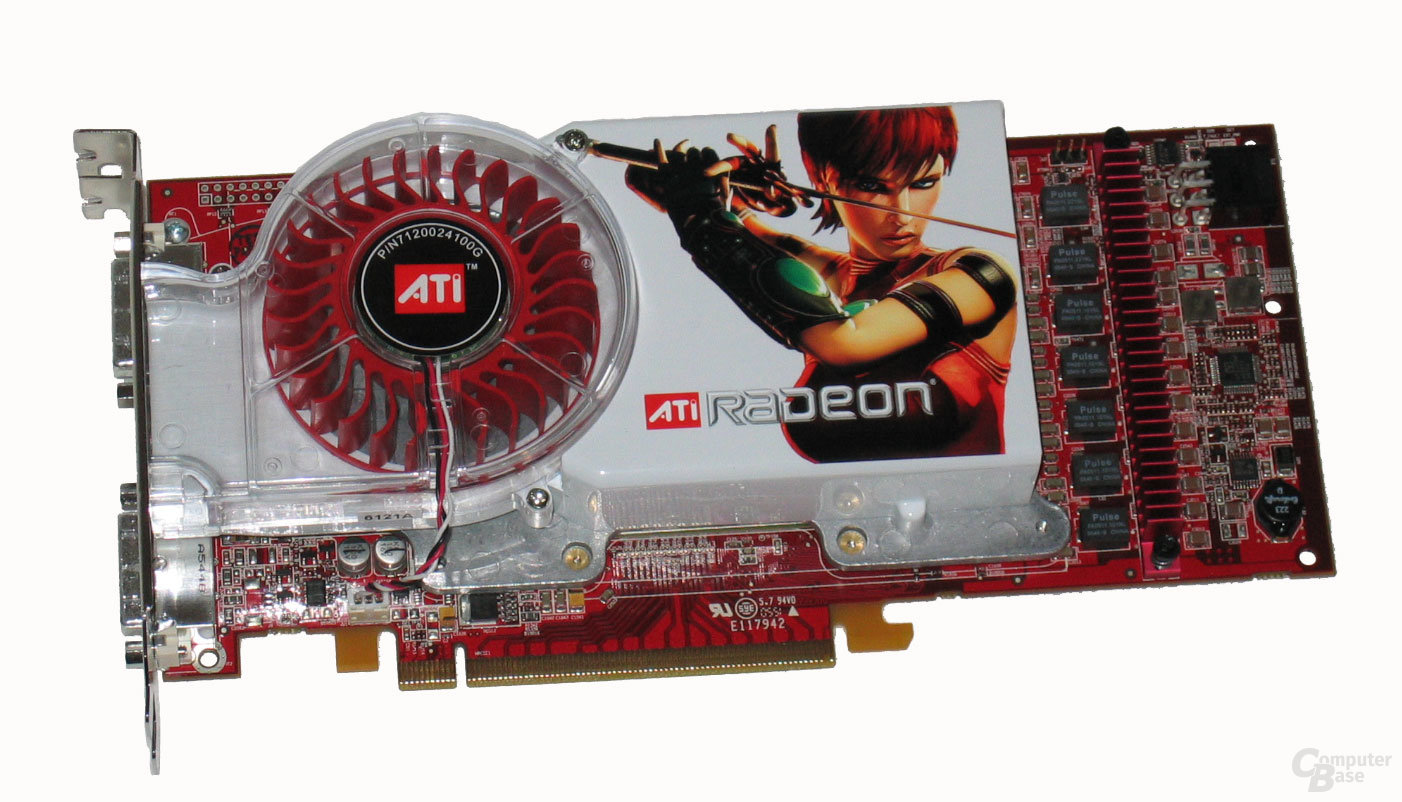 Powercolor X1900 XTX
Powercolor X1900 XTX
Image 1 of 29
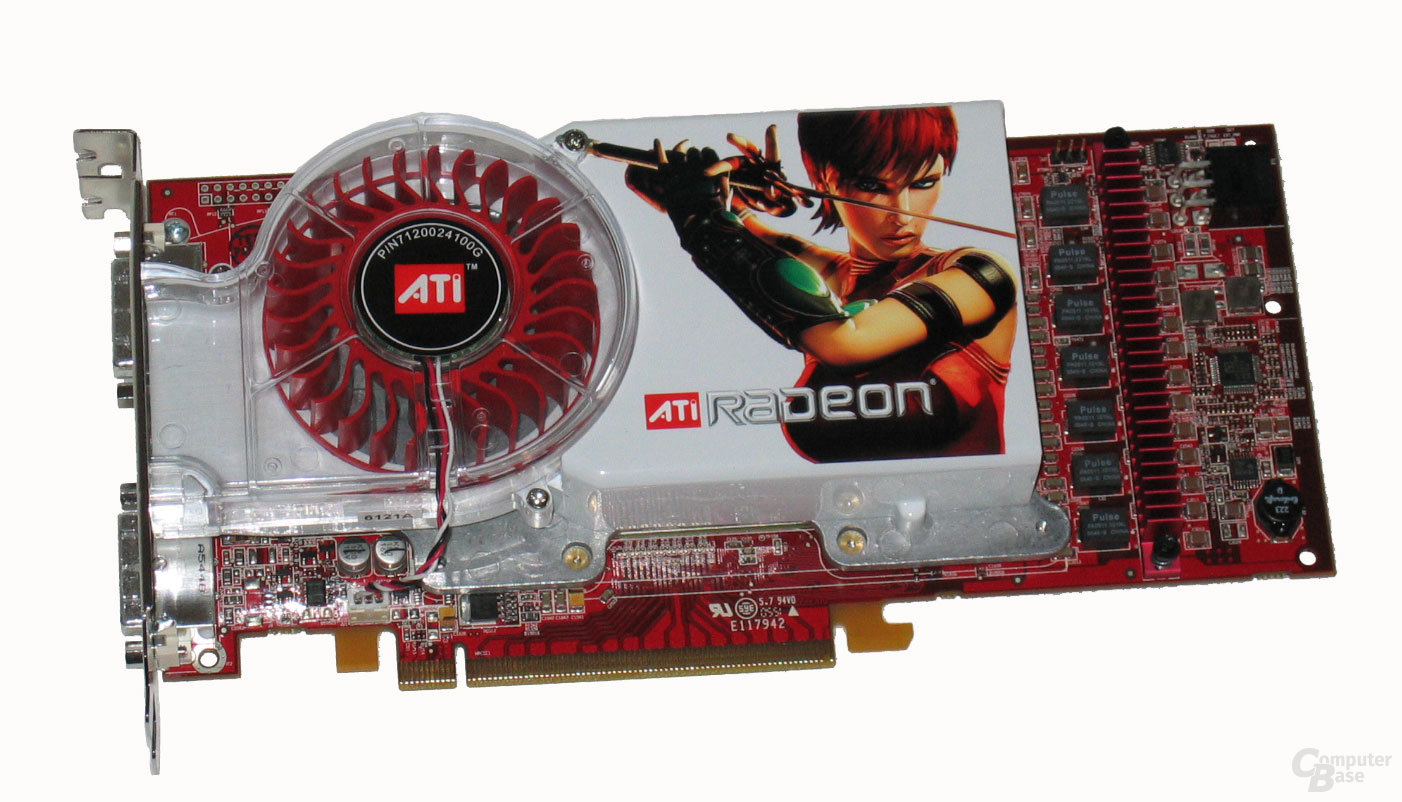 Powercolor X1900 XTX
Powercolor X1900 XTX 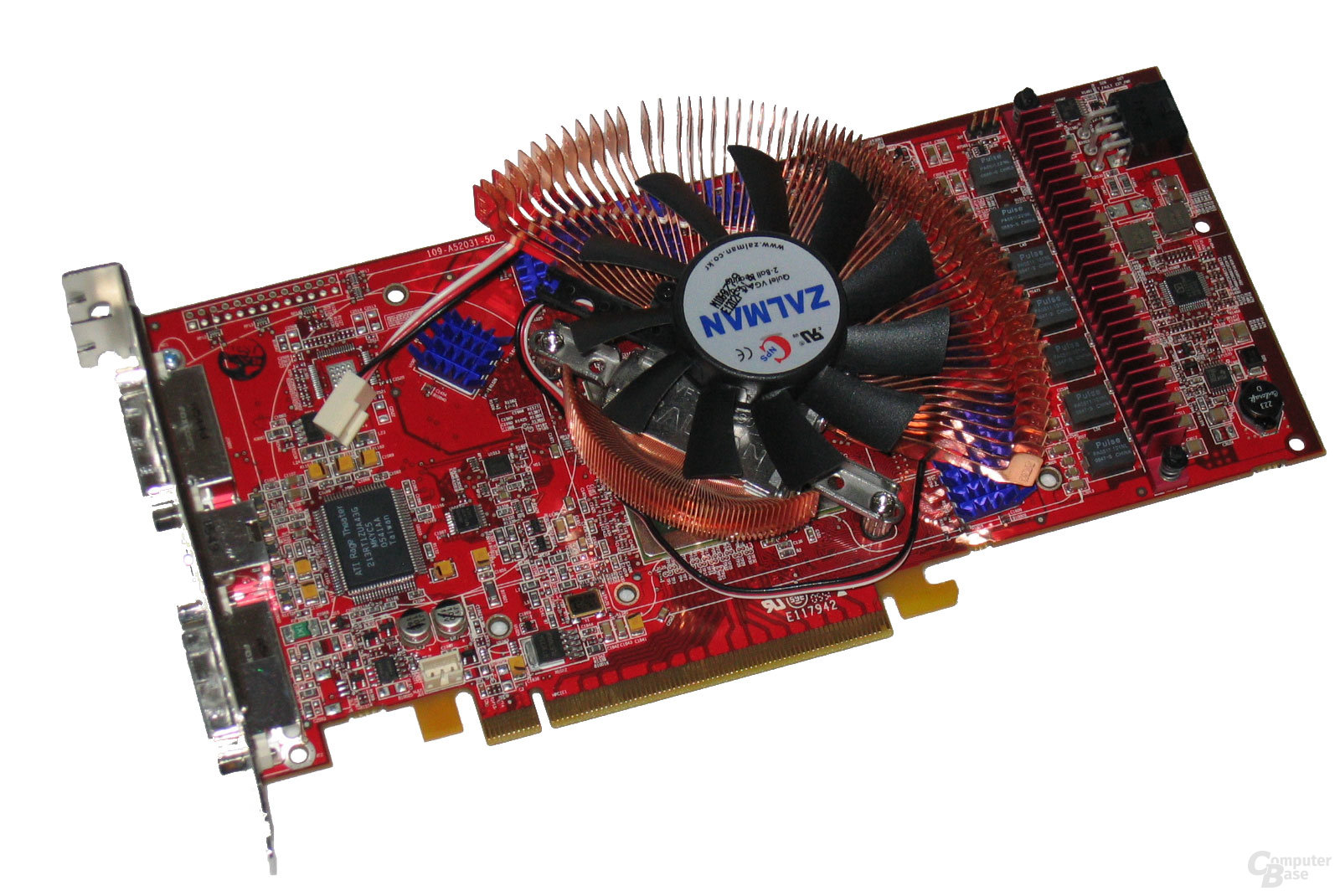 Mad-Moxx Radeon X1900 XTX
Mad-Moxx Radeon X1900 XTX 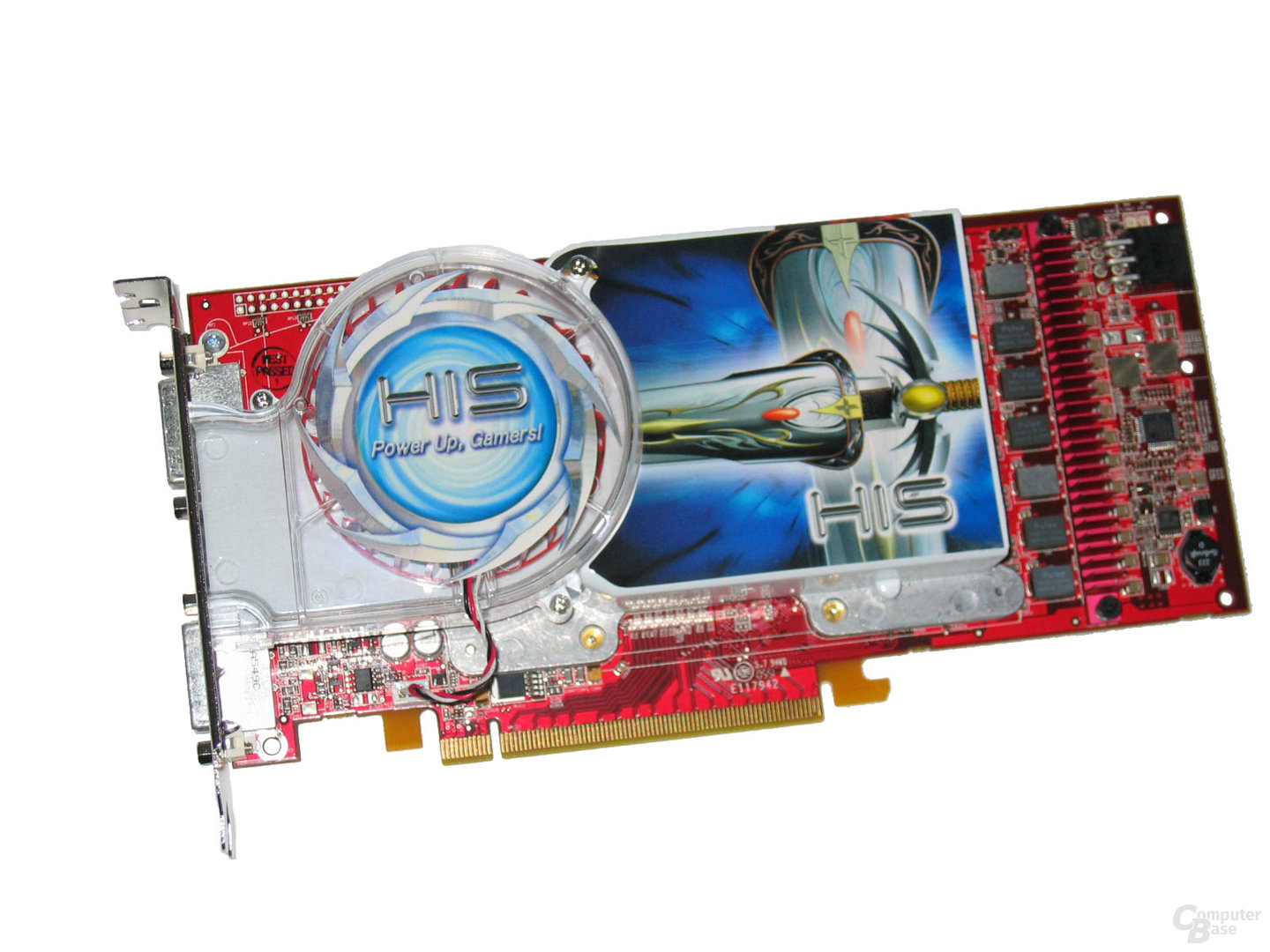 HIS Radeon X1900 XTX
HIS Radeon X1900 XTX 
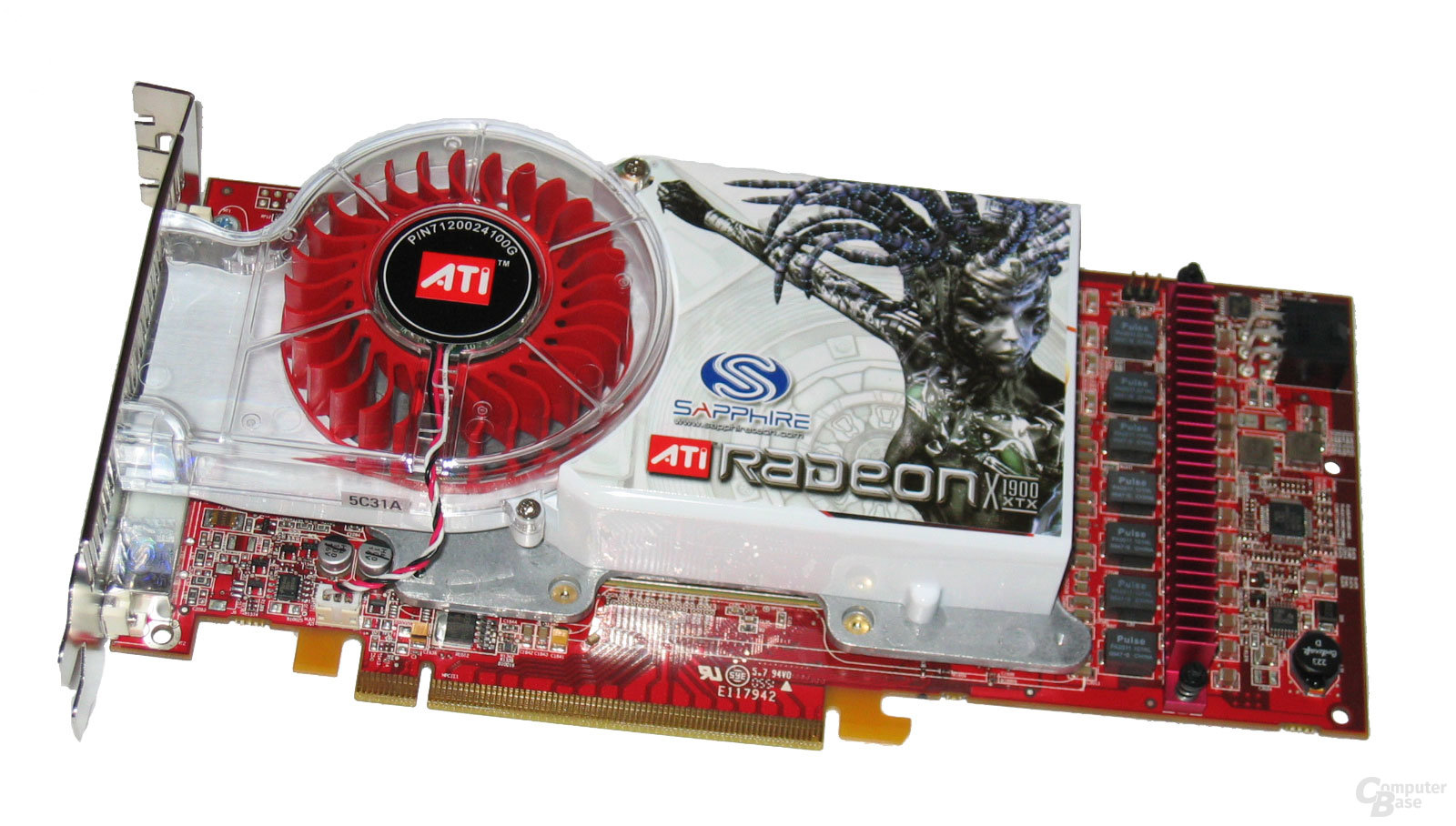 Sapphire X1900 XTX
Sapphire X1900 XTX 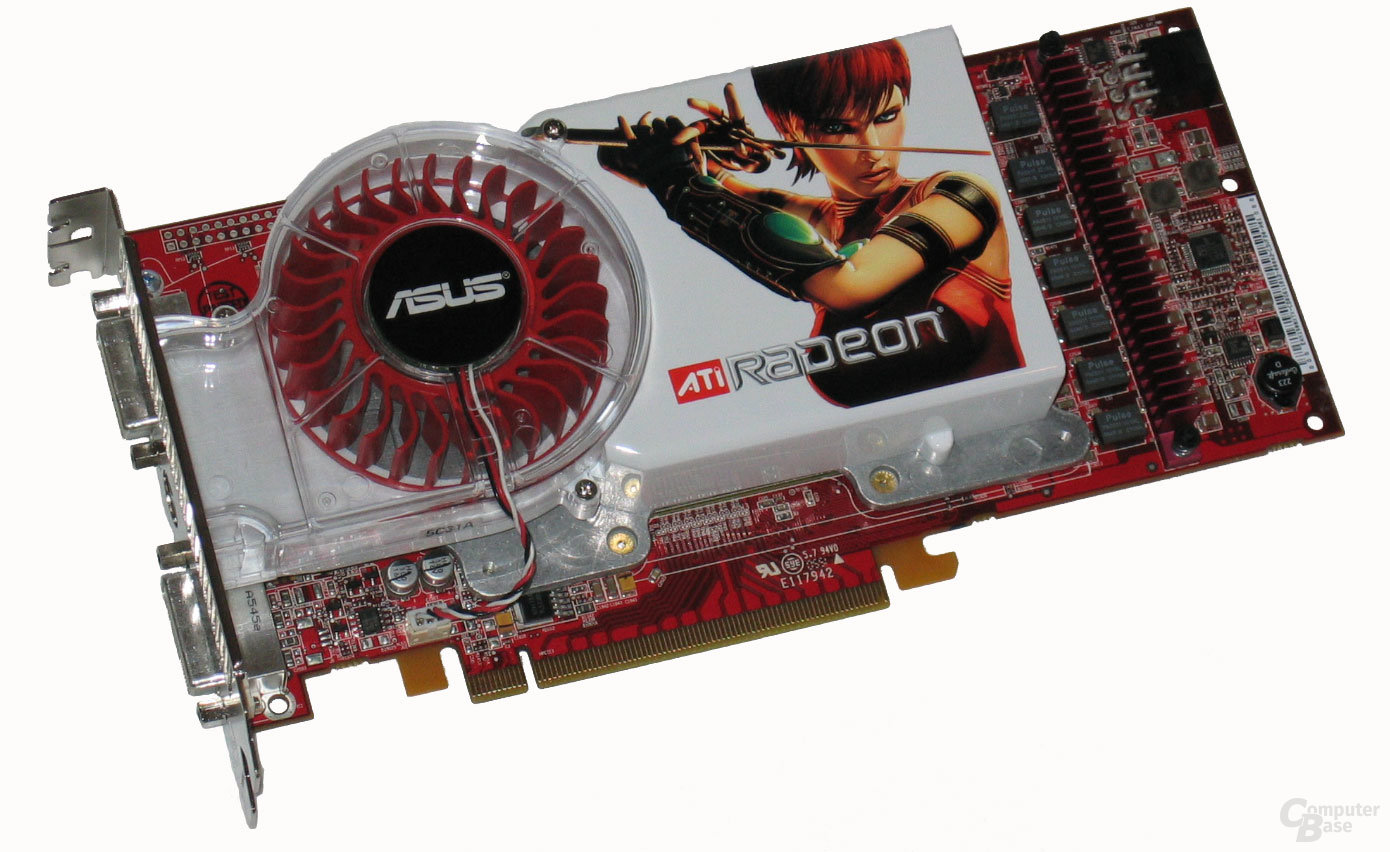 Asus Radeon X1900 XTX
Asus Radeon X1900 XTX 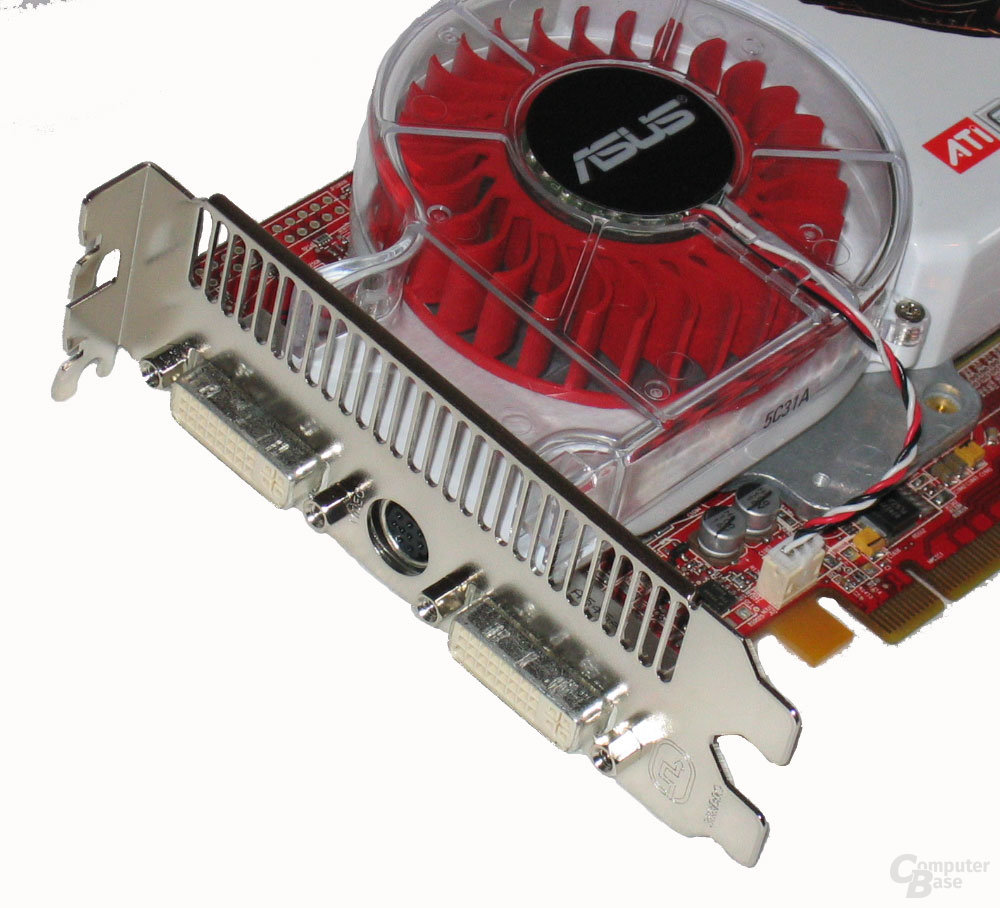 Asus Radeon X1900 XTX
Asus Radeon X1900 XTX 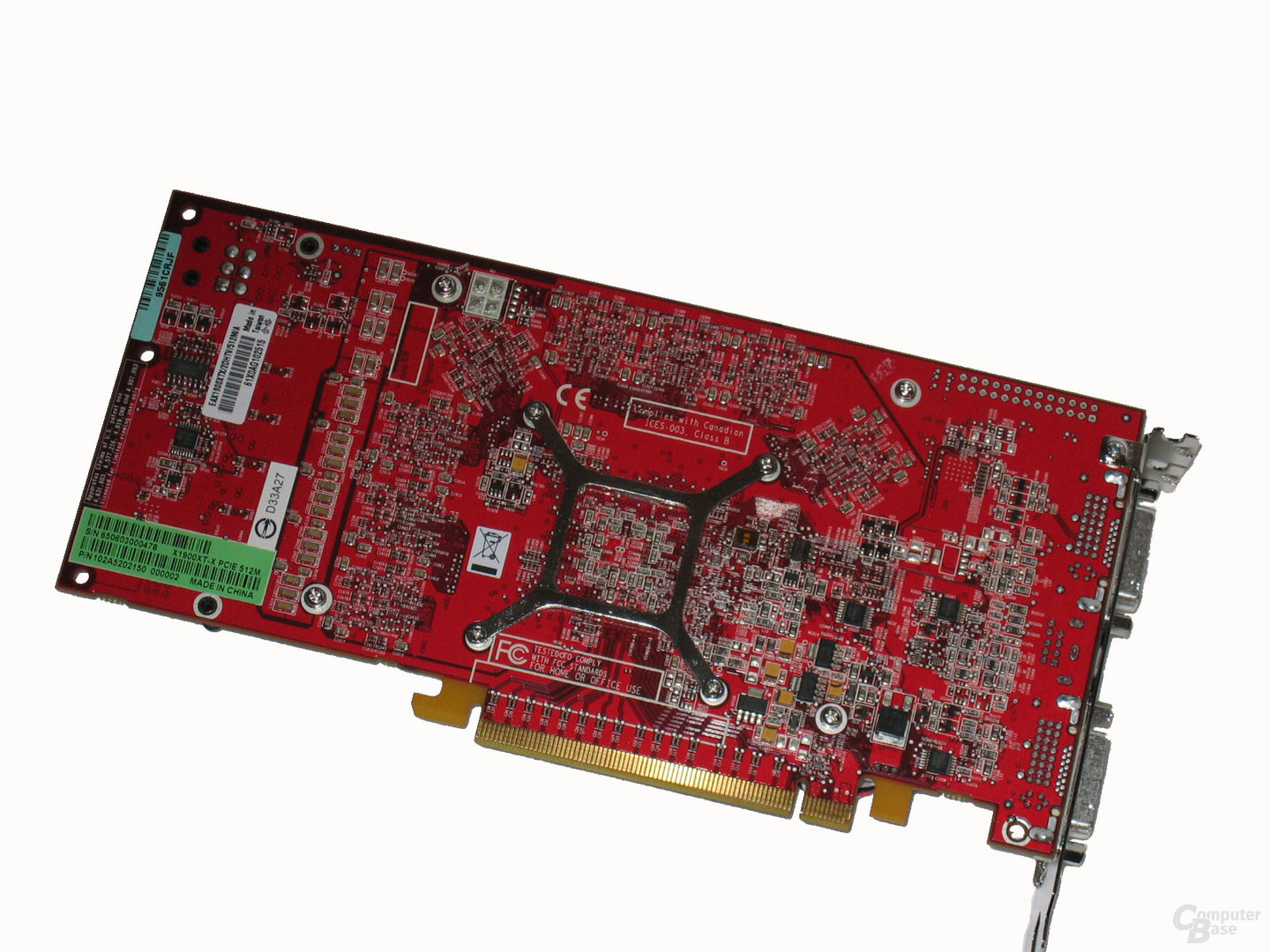 Asus Radeon X1900 XTX
Asus Radeon X1900 XTX 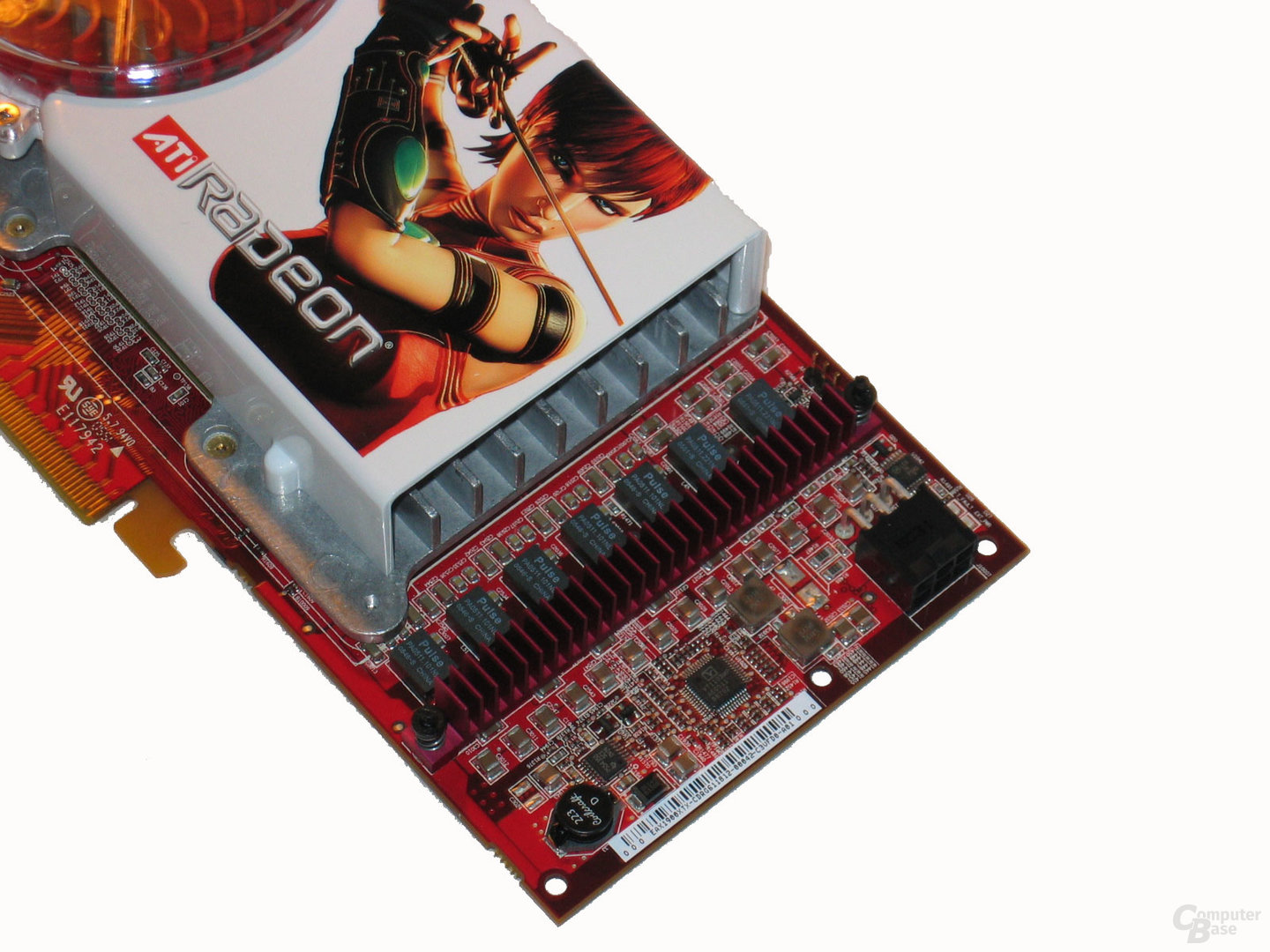 Asus Radeon X1900 XTX
Asus Radeon X1900 XTX 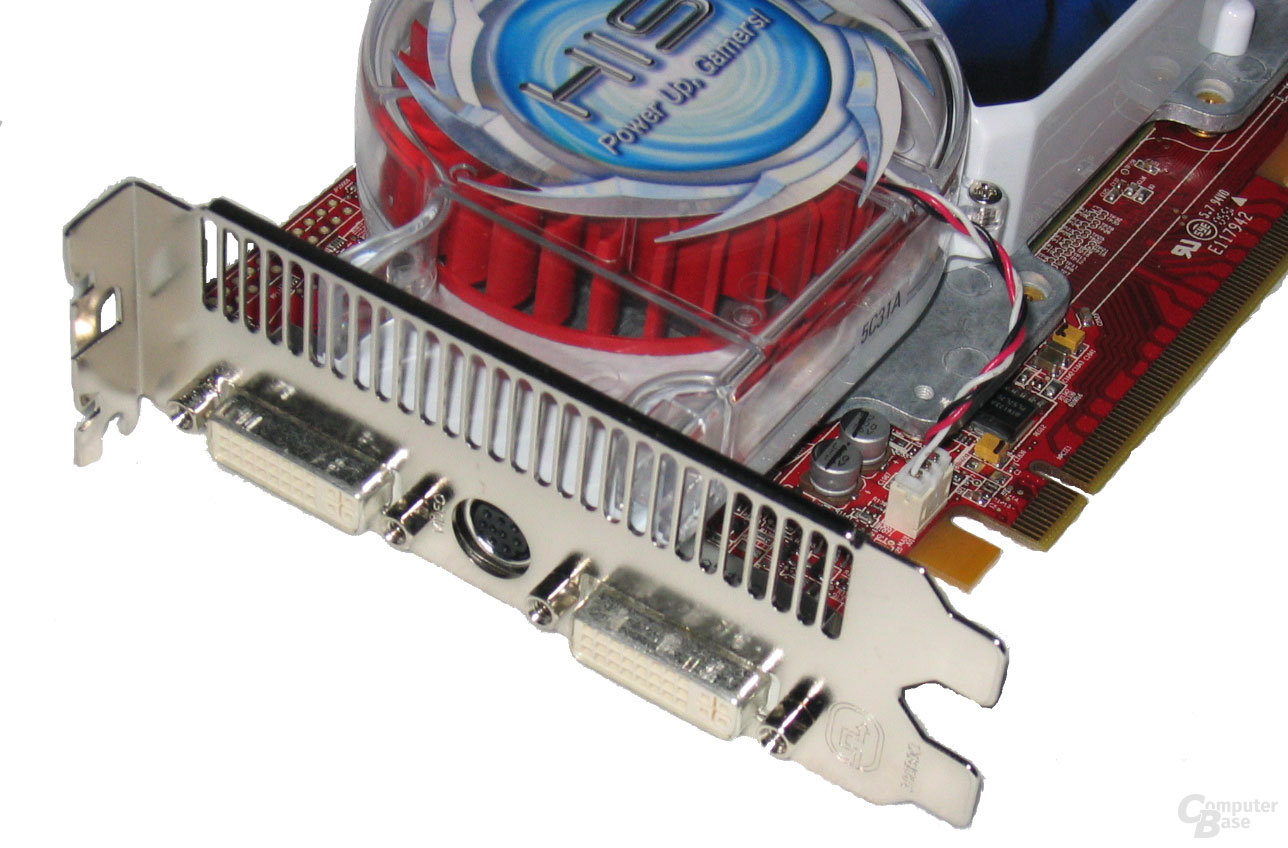 HIS Radeon X1900 XTX
HIS Radeon X1900 XTX 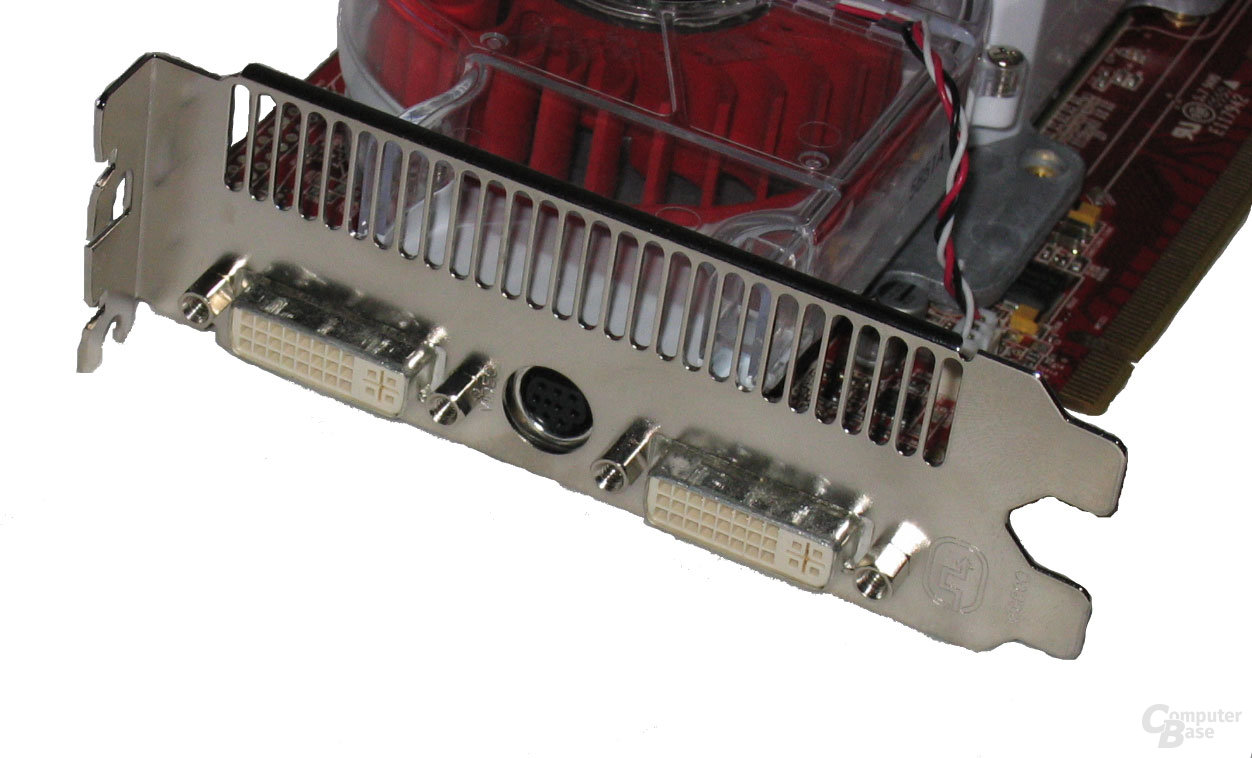 Club3D X1900 XTX
Club3D X1900 XTX  Club3D X1900 XTX
Club3D X1900 XTX 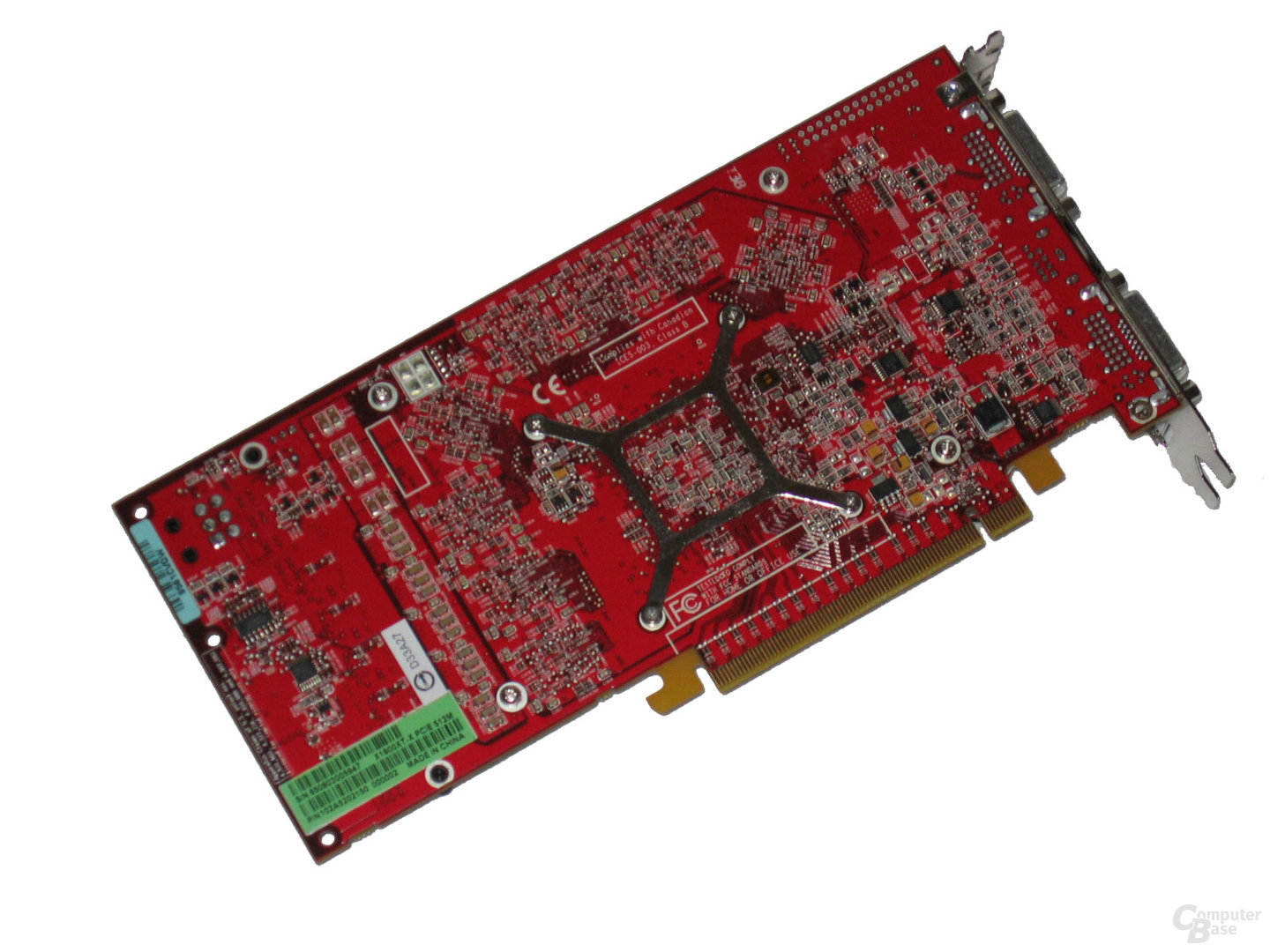 Powercolor X1900 XTX
Powercolor X1900 XTX 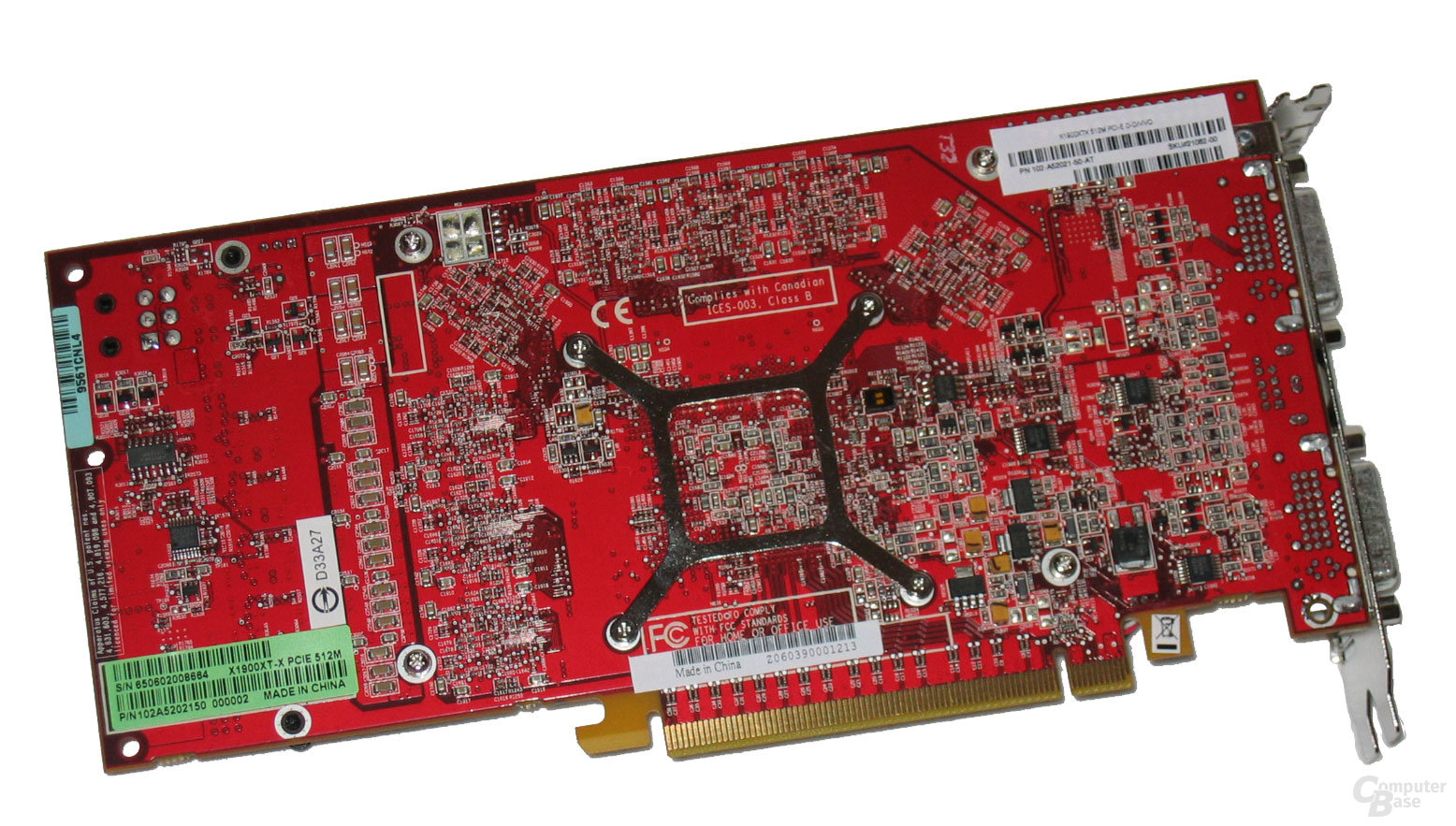 Sapphire X1900 XTX
Sapphire X1900 XTX 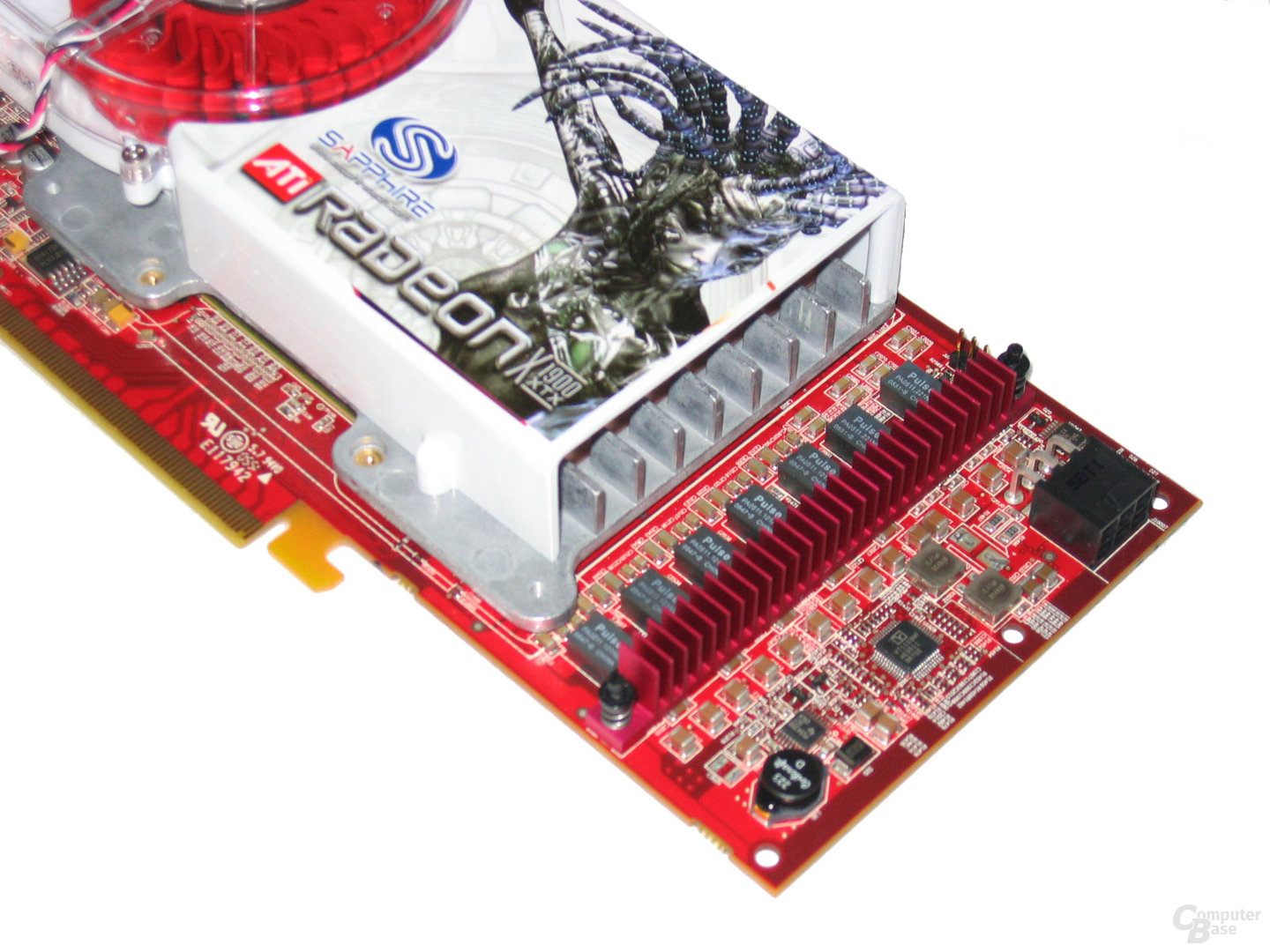 Sapphire X1900 XTX
Sapphire X1900 XTX 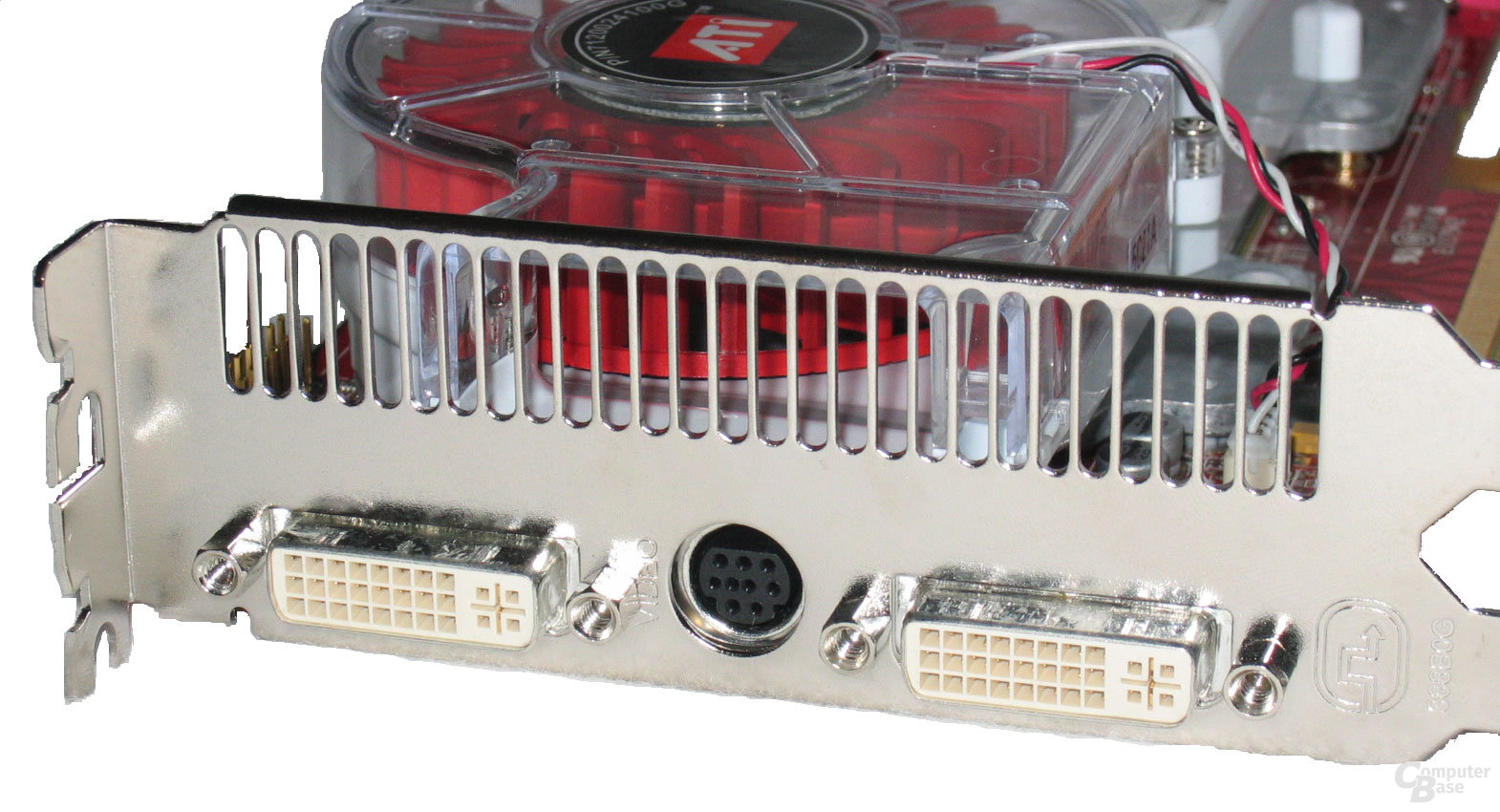 Sapphire X1900 XT
Sapphire X1900 XT 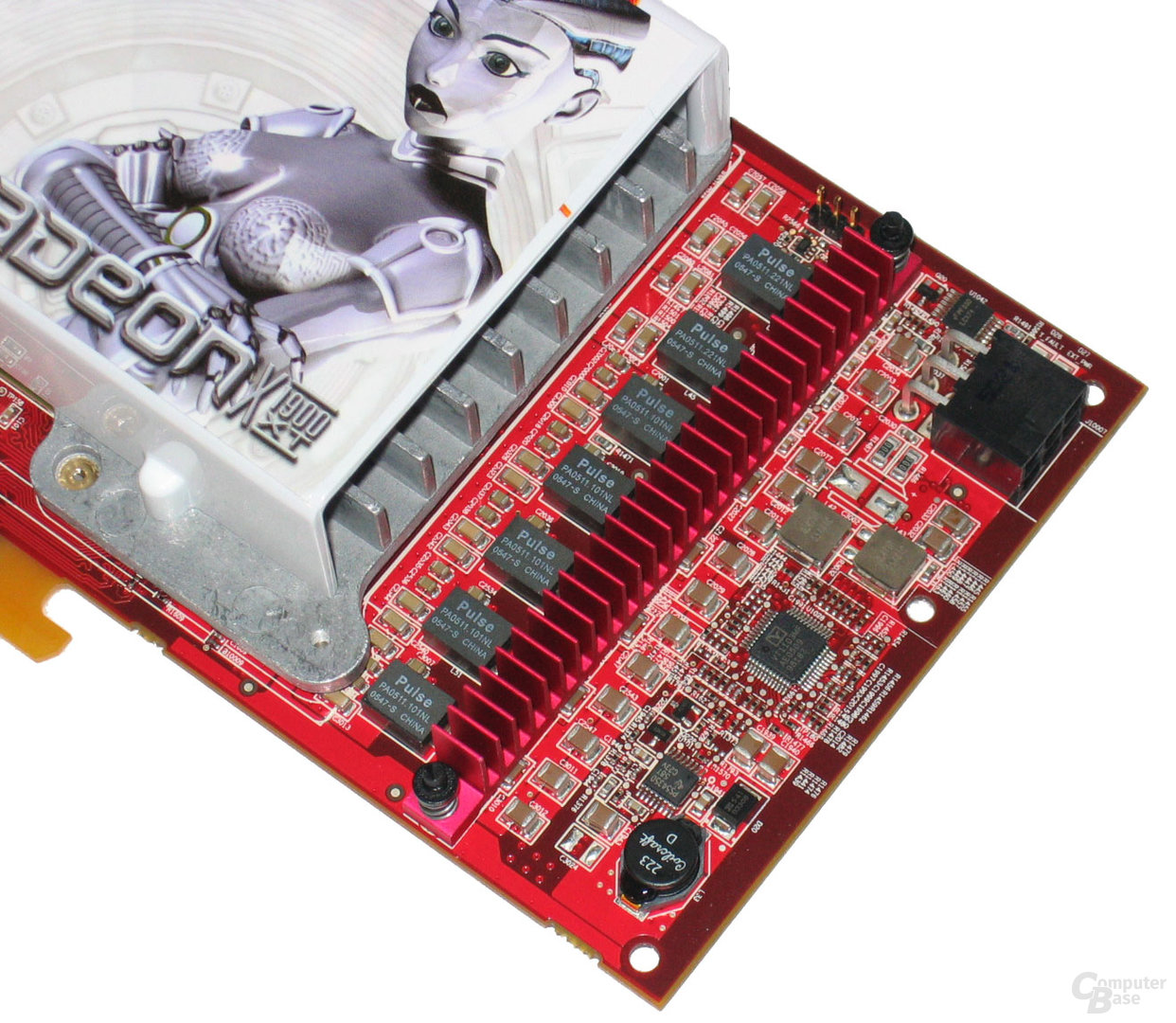 Sapphire X1900 XT
Sapphire X1900 XT 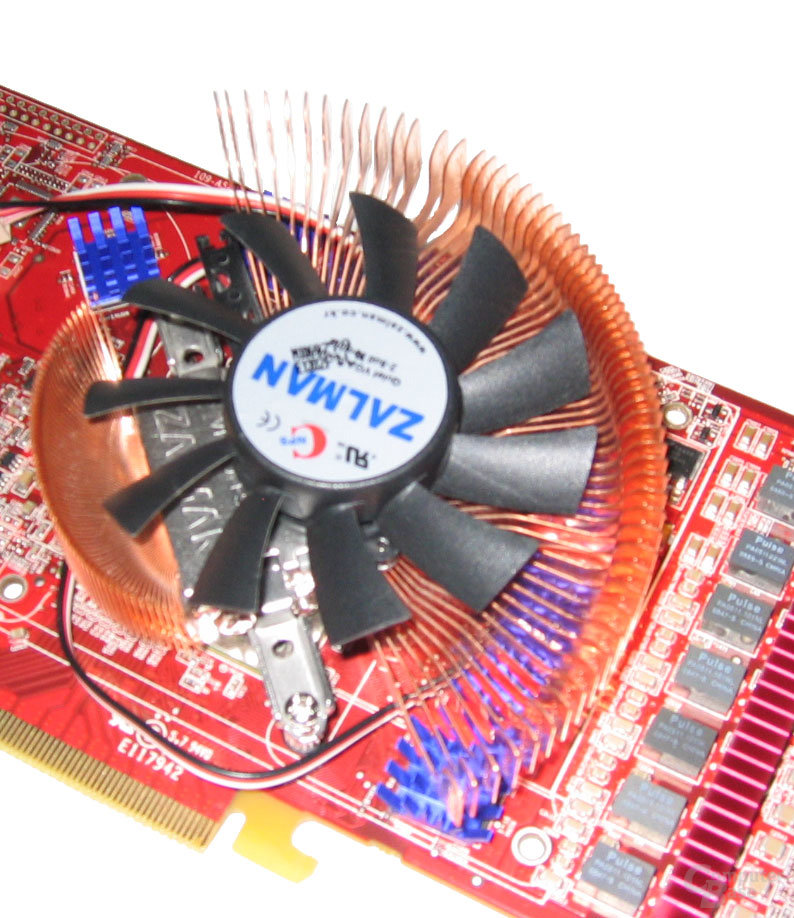 Mad-Moxx Radeon X1900 XTX
Mad-Moxx Radeon X1900 XTX 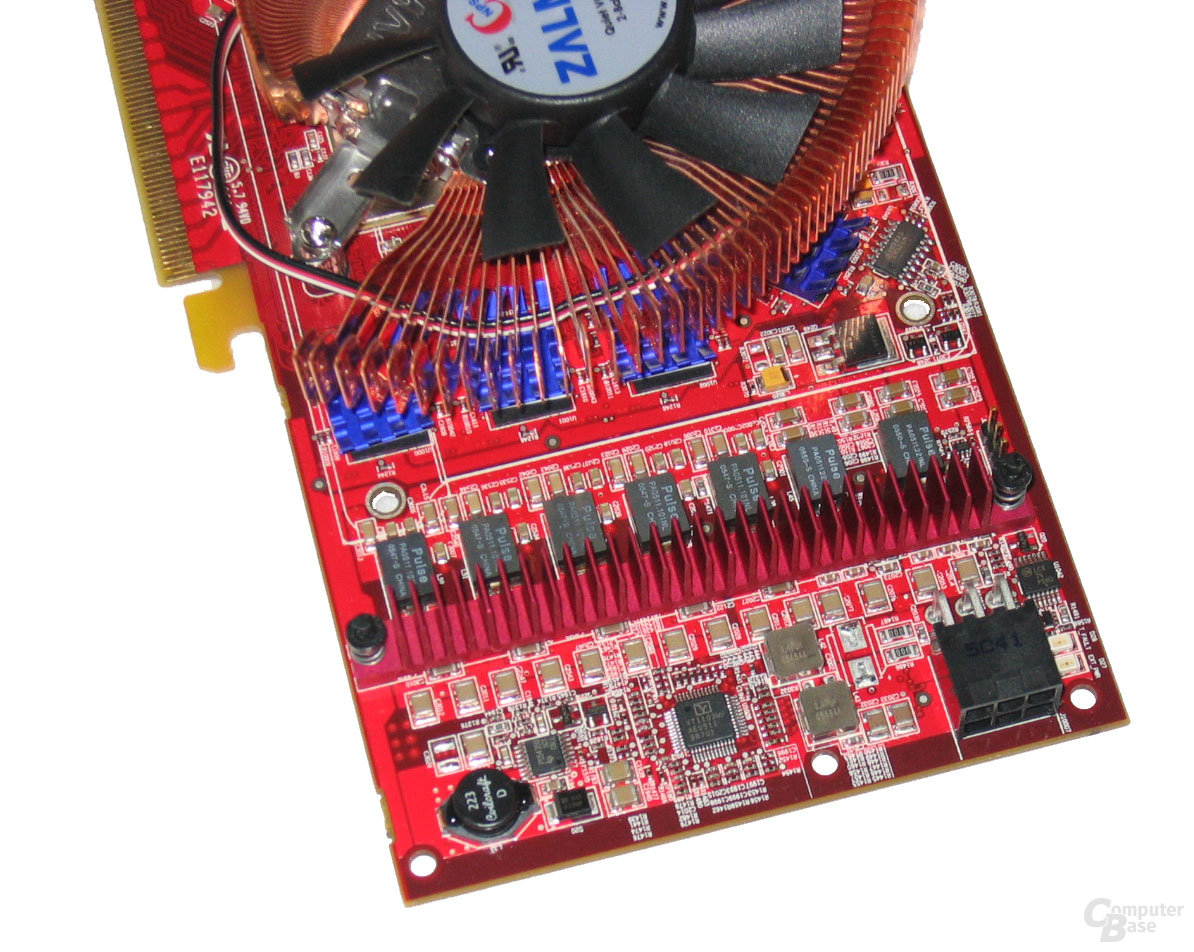 Mad-Moxx Radeon X1900 XTX
Mad-Moxx Radeon X1900 XTX  Mad-Moxx Radeon X1900 XTX
Mad-Moxx Radeon X1900 XTX  The technical data was identical for all models. The centerpiece was the ATis R580 GPU, which was operated at 650 MHz. 512 MB GDDR3 graphics memory with 775 MHz were available. All manufacturers rely on memory chips from Samsung. The same agreement prevailed with the connections: With each graphics card, customers could fall back on two DVI-I interfaces and a TV-out port. This left only two points where manufacturers could in principle set themselves apart from the competition: accessories and cooling.
The technical data was identical for all models. The centerpiece was the ATis R580 GPU, which was operated at 650 MHz. 512 MB GDDR3 graphics memory with 775 MHz were available. All manufacturers rely on memory chips from Samsung. The same agreement prevailed with the connections: With each graphics card, customers could fall back on two DVI-I interfaces and a TV-out port. This left only two points where manufacturers could in principle set themselves apart from the competition: accessories and cooling.
Asus & apos; The model included the games King Kong and Project Snowblind as well as the video editing software PowerDirector 3 DE. Club 3D also relied on bonuses and threw Colin McRae Rally 2005, WWF Panda Junior in Africa as well as PowerDirector and PowerDVD 5 into the ring. At HIS there were Dungeon Siege, PowerDirector 3 SE Plus and PowerDVD 6, while Sapphire relied on PowerDirector 4 DE and PowerDVD 6. Mad-Moxx did without games and software and instead relied on a pre-installed Zalman VF-700 Cu, which should ensure quieter and better cooling of the GPU. There was absolute standard food at PowerColor, because the manufacturer did not include a special cooling solution or special accessories.
Test results saw the custom cooler in front
The differences in the performance of the graphics cards were, as expected, within the scope of the measurement inaccuracy. All Radeon X1900 XTX were about the same speed, the Radeon X1900 XT a few percent slower.
«Previous 1,280 x 1,0241,280 x 1,024 4xAA/16xAF3DMark053DMark06Age of Empire IIIAquamark 3Doom 3Earth 2160F.EARHalf-Life 2 – Lost CoastQuake 4Serious Sam 2The Chronicles of Riddick Next»
- 1,280 x 1,024 unit: percent
-
- Mad-Moxx X1900 XTX99,7
- Club3D X1900 XTX99,2
- HIS X1900 XTX99,1
- Sapphire X1900 XTX98,9
- Asus X1900 XTX98,7
- PowerColor X1900 XTX98,7
- Sapphire X1900 XT96,5
-
- 1,280 x 1,024 4xAA/16xAF Unit: percent
-
- < li class = "chart__row"> Mad-Moxx X1900 XTX99,9
- Asus X1900 XTX99,3
- PowerColor X1900 XTX99,3
- HIS X1900 XTX99,2
- Sapphire X1900 XTX99,2
- Club3D X1900 XTX99,1
- Sapphire X1900 XT95,6
-
- < li class = "chart__group"> 1,280 x 1,024:
- Sapphire X1900 XT9.472
- PowerColor X1900 XTX9. 332
- Asus X1900 XTX9.311
- HIS X1900 XTX9.306
- Club3D X1900 XTX9 .305
- Mad-Moxx X1900 XTX9.236
- Sapphire X1900 XTX9.225
- Mad-Moxx X1900 XTX7.866
- HIS X1900 XTX7.773
- Club3D X1900 XTX7.772
- Asus X1900 XTX7.760
- Sapphire X1900 XTX7.755
- PowerColor X1900 XTX7.745
- Sapphire X1900 XT7.392
- 1,280 x 1,024:
- Club3D X1900 XTX4.643
- Asus X1900 XTX4.641
- Mad-Moxx X1900 XTX4.639
- PowerColor X1900 XTX4.637
- Sapphire X1900 XTX4.636
- HIS X1900 XTX4.634
- Sapphire X1900 XT4.466
- 1,280 x 1,024 4xAA/16xAF:
- Sapphire X1900 XTX4.310
- HIS X1900 XTX4.310
- Club3D X1900 XTX4.307
- Mad-Moxx X1900 XTX4.306
- Asus X1900 XTX4.303
- PowerColor X1900 XTX4.299
- Sapphire X1900 XT4.141
- 1,280 x 1.024:
- Mad-Moxx X1900 XTX82,1
- HIS X1900 XTX81,4
- Club3D X1900 XTX81,1
- PowerColor X1900 XTX81,0
- Sapphire X1900 XTX81,0
- Asus X1900 XTX80,7
- Sapphire X1900 XT77,3
- 1,280 x 1,024 4xAA/16xAF:
- Mad-Moxx X1900 XTX68,7
- Asus X1900 XTX68,2
- Sapphire X1900 XTX68,2
- HIS X1900 XTX68,2
- PowerColor X1900 XTX68,1
- Club3D X1900 XTX68,0
- Sapphire X1900 XT65,1
- 1,280 x 1,024:
- Sapphire X1900 XTX74,9
- Club3D X1900 XTX74,9
- Mad-Moxx X1900 XTX74,9
- Asus X1900 XTX74,9
- PowerColor X1900 XTX74,7
- HIS X1900 XTX74,6
- Sapphire X1900 XT74,4
- 1,280 x 1,024 4xAA/16xAF:
- Mad-Moxx X1900 XTX68,8
- Asus X1900 XTX68,8
- Sapphire X1900 XTX68,7
- PowerColor X1900 XTX68,7
- HIS X1900 XTX68,6
- Club3D X1900 XTX68,6
- Sapphire X1900 XT67,3
- 1,280 x 1,024:
- Club3D X1900 XTX88,2
- Asus X1900 XTX88,1
- PowerColor X1900 XTX88,1
- HIS X1900 XTX88,1
- Sapphire X1900 XTX87,8
- Mad-Moxx X1900 XTX87,8
- Sapphire X1900 XT86,7
- 1,280 x 1,024 4xAA/16xAF:
- Sapphire X1900 XTX77,1
- PowerColor X1900 XTX77,0
- HIS X1900 XTX77,0
- Asus X1900 XTX76,9
- Club3D X1900 XTX76,9
- Mad-Moxx X1900 XTX76,9
- Sapphire X1900 XT74,4
- 1,280 x 1,024:
- Sapphire X1900 XT38,1
- Mad-Moxx X1900 XTX37,9
- Asus X1900 XTX37,8
- HIS X1900 XTX37,8
- Sapphire X1900 XTX37,7
- PowerColor X1900 XTX37,7
- Club3D X1900 XTX37,7
- 1,280 x 1,024 4xAA/16xAF:
- Mad-Moxx X1900 XTX35,3
- Sapphire X1900 XT35,2
- Sapphire X1900 XTX35,1
- PowerColor X1900 XTX35,0
- HIS X1900 XTX34,9
- Club3D X1900 XTX34,9
- Asus X1900 XTX34,8
- 1,280 x 1,024:
- Mad-Moxx X1900 XTX80,0
- Asus X1900 XTX79,0
- Sapphire X1900 XTX79,0
- PowerColor X1900 XTX79,0
- HIS X1900 XTX79,0
- Club3D X1900 XTX79,0
- Sapphire X1900 XT76,0
- 1,280 x 1,024 4xAA/16xAF:
- Asus X1900 XTX62,0
- Sapphire X1900 XTX62,0
- PowerColor X1900 XTX62,0
- Mad-Moxx X1900 XTX62,0
- HIS X1900 XTX61,0
- Club3D X1900 XTX61,0
- Sapphire X1900 XT59,0
- 1,280 x 1,024: < ul class = "chart__group-body">
- Mad-Moxx X1900 XTX79,9
- Club3D X1900 XTX77,6
- Asus X1900 XTX77,3
- Sapphire X1900 XTX77,0
- HIS X1900 XTX76,5
- Sapphire X1900 XT76,0
- PowerColor X1900 XTX74,9
- Mad-Moxx X1900 XTX65,8
- HIS X1900 XTX64,2
- Club3D X1900 XTX64,0
- PowerColor X1900 XTX64,0
- Asus X1900 XTX63,9
- Sapphire X1900 XTX63,8
- Sapphire X1900 XT62,3
- 1,280 x 1,024:
- HIS X1900 XTX47,7
- Club3D X1900 XTX47,7
- Mad-Moxx X1900 XTX47,7
- Sapphire X1900 XTX47, 5
- PowerColor X1900 XTX47,5
- Asus X1900 XTX46,0
- Sapphire X1900 XT45,0
- 1,280 x 1,024 4xAA/16xAF:
- HIS X1900 XTX42,1
- PowerColor X1900 XTX42,0
- Club3D X1900 XTX41,9
- Mad-Moxx X1900 XTX41,9
- Asus X1900 XTX41,5
- Sapphire X1900 XTX41,1
- Sapphire X1900 XT39,9
- 1,280 x 960:
- Mad-Moxx X1900 XTX51,8
- Sapphire X1900 XTX51 , 6
- HIS X1900 XTX51,6
- Asus X1900 XTX51,5
- Club3D X1900 XTX51,5
- PowerColor X1900 XTX51,0
- Sapphire X1900 XT50,8
- 1,280 x 960 4xAA/16xAF:
- Asus X1900 XTX47,6
- Mad-Moxx X1900 XTX47,5
- Sapphire X1900 XTX47,4
- PowerColor X1900 XTX47,2
- Club3D X1900 XTX47,2
- HIS X1900 XTX47,1
- Sapphire X1900 XT46,5
- 1,280 x 1,024:
- Mad-Moxx X1900 XTX66,0
- HIS X1900 XTX65,8
- Asus X1900 XTX65,7
- Club3D X1900 XTX65,6
- Sapphire X1900 XTX65,6
- PowerColor X1900 XTX65,6
- Sapphire X1900 XT62,5
- 1,280 x 1,024 4xAA/16xAF:
- HIS X1900 XTX44,4
- Mad-Moxx X1900 XTX44,3
- Asus X1900 XTX44,2
- Sapphire X1900 XTX44,2
- PowerColor X1900 XTX44,2
- Club3D X1900 XTX44,2
- Sapphire X1900 XT42,0
On the other hand, there were larger differences in the B grades. In terms of volume, the Mad-Moxx X1900 XTX was most convincing thanks to the built-in Zalman VF700 Cu. The other models were about 58 percent louder under load, whereby the Sapphire model was positively out of line. The Radeon X1900 XT from Sapphire, on the other hand, was by far the loudest model, although it formally relied on the same cooler. A similar picture emerged for the temperatures. The GPU on the Mad Moxx graphics card was 16 Kelvin cooler under load than the GPUs on the graphics cards with a reference cooler. The bottom light was again the Sapphire Radeon X1900 XT, which was close to the temperature limit at 91 ° C.
«Previous VolumeTemperaturePower consumptionOverclocking Next»
- Volume unit: dB (A)
- Idle (Windows desktop):
- Sapphire X1900 XTX56
- Sapphire X1900 XT56
- Mad-Moxx X1900 XTX56
- Club3D X1900 XTX57
- HIS X1900 XTX57
- PowerColor X1900 XTX57
- Asus X1900 XTX57
- last:
- Mad-Moxx X1900 XTX57
- Sapphire X1900 XTX60
- Club3D X1900 XTX61
- HIS X1900 XTX61
- PowerColor X1900 XTX61
- Asus X1900 XTX61
- Sapphire X1900 XT63
- Idle (Windows desktop):
- Temperature unit: ° C
- Idle (Windows desktop ):
- HIS X1900 XTX42
- Mad-Moxx X1900 XTX43
- Club3D X1900 XTX44
- Asus X1900 XTX45
- Sapphire X1900 XTX46
- PowerColor X1900 XTX46
- Sapphire X1900 XT50
- Last:
- Mad-Moxx X1900 XTX73
- Asus X1900 XTX89
- Sapphire X1900 XTX89
- PowerColor X1900 XTX89
- Club3D X1900 XTX89
- HIS X1900 XTX89
- Sapphire X1900 XT91
- Back:
- Mad-Moxx X1900 XTX49
- Asus X1900 XTX68
- PowerColor X1900 XTX68
- Sapphire X1900 XT69
- Sapphire X1900 XTX70
- Club3D X1900 XTX70
- HIS X1900 XTX70
- Idle (Windows desktop ):
- Power consumption unit: watt (W)
- Idle (Windows desktop):
- HIS X1900 XTX144
- PowerColor X1900 XTX144
- Mad-Moxx X1900 XTX145
- Asus X1900 XTX146
- Club3D X1900 XTX147
- Sapphire X1900 XTX147
- Sapphire X1900 XT147
- last:
- HIS X1900 XTX315
- Club3D X1900 XTX316
- Asus X1900 XTX318
- PowerColor X1900 XTX323
- Sapphire X1900 XTX324
- Mad- Moxx X1900 XTX327
- Sapphire X1900 XT329
- Idle (Windows desktop):
- Overclocking unit: images per second (FPS)
- Far Cry:
- HIS X1900 XTX Standard (650/775) 78.18
- Club3D X1900 XTX Standard (650/775) 78.13
- Asus X1900 XTX Standard (650/775) 77.92
- Sapphire X1900 XTX Standard (650/775) 77.87
- Sapphire X1900 XT Standard (625/725) 77.83
- PowerColor X1900 XTX Standard (650/775) 77.81
- Asus X1900 XTX overclocked (675/873) 77.72
- PowerColor X1900 XTX overclocked (682/846) 77.72
- Sapphire X1900 XTX overclocked (675/837) 77.67
- Mad-Moxx X1900 XTX Standard (650/775) 77.66
- Mad-Moxx X1900 XTX overclocked (655/828) 77.31
- Sapphire X1900 XT overclocked (695/783) 77.12
- HIS X1900 XTX overclocked (668/855) 77.07
- Club3D X1900 XTX Overclocked (675/828) 76.60
- Half-Life 2 – Lost Coast:
- Mad-Moxx X1900 XTX overclocked (655/828) 66.96
- Mad-Moxx X1900 XTX Standard (650/775) 65.80
- Asus X1900 XTX overclocked (675/873) 65.80
- HIS X1900 XTX overclocked (668/855) 65.73
- Club3D X1900 XTX overclocked (675/828) 65.73
- PowerColor X1900 XTX overclocked (682/846) 65.60
- Sapphire X1900 XTX overclocked (675/837) 65.30
- Sapphire X1900 XT overclocked (695/783) 64.20
- HIS X1900 XTX Standard (650/775) 64.18
- Club3D X1900 XTX Standard (650/775) 64.00
- PowerColor X1900 XTX Standard (650/775) 63.96
- Asus X1900 XTX Standard (650/775) 63.87
- Sapphire X1900 XTX Standard (650/775) 63.80
- Sapphire X1900 XT Standard (625/725) 62.34
- Quake 4:
- Asus X1900 XTX overclocked (675/873) 45.20
- Club3D X1900 XTX overclocked (675/828) 45.00
- PowerColor X1900 XTX overclocked (682/846) 44.50
- Sapphire X1900 XTX overclocked (675/837) 44.10
- HIS X1900 XTX overclocked (668/855) 43.80
- Mad-Moxx X1900 XTX overclocked (655/828) 43.50
- Sapphire X1900 XT overclocked (695/783) 42.60
- HIS X1900 XTX Standard (650/775) 42.10
- Mad-Moxx X1900 XTX Standard (650/775) 42.10
- PowerColor X1900 XTX Standard (650/775) 42.00
- Club3D X1900 XTX Standard (650/775) 41.90
- Asus X1900 XTX Standard (650/775) 41.50
- Sapphire X1900 XTX Standard (650/775) 41.10
- Sapphire X1900 XT Standard (625/725) 39.90
- Far Cry:
If a current high-end model from ATi was not fast enough, the performance could be further increased by overclocking. In terms of GPU, PowerColor came off best with 682 MHz, while the Asus model achieved the highest memory clock with 873 MHz. The performance increases in the benchmarks were more of a theoretical nature. In addition, the overclocking results of individual graphics cards could not be transferred to all models of a manufacturer, as they depend on the chip quality.
Conclusion
Which Radeon X1900 XT (X) came out best in the test difficult to determine. The best cooler was clearly the Mad-Moxx model. At 530 euros, this was also the only model that exceeded the 500 euros mark. Those who wanted to spend less could choose from the remaining models and buy the cheapest graphics card with the best features.
In the “Tested 15 years ago” category, the editorial team has been looking into the test archive every Saturday since July 2017. The last 20 articles that appeared in this series are listed below:
- PCIe x8 versus PCIe x16 for multi-GPU systems
- ATi's X1900 GT bit its teeth on Nvidia's 7900 GT
- PhysX accelerator for 299 euros from Ageia
- The GeForce 7600 GS was a stunner for 125 euros
- HTPC case from Lian Li and Silverstone
- The GeForce 7900 GTX in 90 nm and with a higher clock rate
- Creative Sound Blaster X-Fi for more audio quality and FPS
- Intel’s Pentium EE 965 was faster and more economical
- Silentwinter got the Athlon 64 going with RAM-OC
- ATi's all-in-wonder Radeons with TV tuner
- Entry-level graphics cards were loud or slow
- Noctua's first CPU coolers NH-U9 and NH-U12
- The GeForce 7800 GS breathed life into AGP again
- ATi's Radeon X1900 XTX was fast, hot and loud
- Dual-core CPUs from AMD and Intel in a duel
- In the second attempt, ATi CrossFire was better
- Two GeForce 7800 GTX 512 in the SLI network
- When 2 GByte RAM were generous
- Insulation mats for a quiet computer
< li> The 1st thermal paste made of liquid metal for the PC
Even more content of this kind and many more reports and anecdotes can be found in the retro corner of ComputerBase forum.
